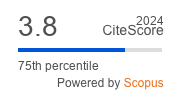Article | Open Access
Mapping Urbanization as an Anthropedogenetic Process: A Section through the Times of Urban Soils
| Views: | 4005 | | | Downloads: | 1517 |
Abstract: Current trends of spatial planning policies give a strategic role to soils, the multifunctionality of which must be considered as a crucial driver facing cities’ forthcoming social-ecological transition. However, soils within urban areas are insufficiently studied as a long-term record of environmental history and heavy anthropization. This article investigates the extreme qualitative variability of urban soils by presenting a conceptual model and cartographic workflow highlighting soil evolution processes as a value which co-variates with urbanization. Based on a case study in West Lausanne (Switzerland), the layers and map series of an atlas underscore the applicability of different types of information and spatial analysis for documenting the influence of anthrosediments and land cover changes. Combined with empirical profile descriptions, such a consolidated concept map defines a template, in the form of a complex spatio-temporal figure, on which to apply the state factor approach. Instead of using a simple spatial transect or gradient, the increasing anthropic dominance over original landscape conditions is explained using a section through time. An urban anthroposequence consequently retraces contrasting soil development pathways as a coherent bundle of historical trajectories. Such a narrative integrates various facets of land use, including one-off construction techniques and recurring maintenance practices, planning tools, and morphologies, into a specific ‘project for the ground’ which brought forth the mixed mesh of the Swiss Plateau ‘cityterritory.’ Ultimately, the dynamic vision conveyed by these intertwined soil–urbanization coevolution trajectories outlines opportunities for the regeneration of the resource deposit made up of both West Lausanne’s urban fabric and its soils as a palimpsest.
Keywords: conceptual model of anthropedogenesis; anthrosediments; anthroposequence; ecosystem history; land cover change; soil mapping; spatial planning; urban soils; urban history
Published:
© Antoine Vialle, Mario Giampieri. This is an open access article distributed under the terms of the Creative Commons Attribution 4.0 license (http://creativecommons.org/licenses/by/4.0), which permits any use, distribution, and reproduction of the work without further permission provided the original author(s) and source are credited.


